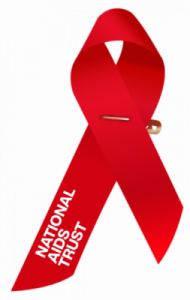World AIDS Day 2020: 1 December
The World Health Organisation (WHO) are making a call to renew the fight against AIDS. With a week to go let’s look at the definitions and some facts:
The human immunodeficiency virus (HIV) targets cells of the immune system, called CD4 cells, which help the body respond to infection. Inside the cell the HIV replicates and destroys the cell. Without effective treatment, the immune system becomes compromised leaving you vulnerable to other diseases.
Acquired immunodeficiency syndrome (AIDS) applies to the most advanced stages of HIV infection. It is defined by ‘the occurrence of any of the more than 20 life-threatening cancers or “opportunistic infections.” Antiretroviral therapy (ART) ensures that most people living with HIV do not progress to AIDS.
The Facts:
- HIV has claimed approximately 33 million lives so far. Increasing access to effective HIV prevention, diagnosis, treatment and care has ensured that HIV infection has become a manageable health condition, enabling people living with HIV to lead longer and healthier lives.
- There were an estimated 38 million people living with HIV at the end of 2019.
- In 2019, 68% of adults and 53% of children living with HIV globally were receiving lifelong antiretroviral therapy (ART).
- 85% of pregnant and breastfeeding women living with HIV also received ART, which protects their health and subsequently ensures prevention of transmission to their newborns.
- Due to gaps in HIV services, 690,000 people died from HIV-related causes in 2019 and 1.7 million people were newly infected.
- WHO defines key populations as people in populations who are at increased HIV risk in all countries and regions. They remain vocal about the vulnerable, the young and key workers receiving priority attention. It is noted that the key populations disproportionately affected by the disease include:
- people who use drugs,
- men who have sex with men,
- sex workers, and;
- people in prisons.
Key populations have the higher infection rates- please do not assume that the disease is limited to these populations- that would be untrue.
- Increased HIV vulnerability is often associated with legal and social factors that expose a person to risk. This creates barriers to accessing testing and treatment.
- HIV can be diagnosed through rapid diagnostic tests that can provide same-day results. Rapid test and self-tests have greatly improved diagnosis rates and access to treatment.
- There is no cure for HIV infection. However, effective antiretroviral drugs (ARVs) control the virus and help prevent onward transmission.
- At the end of 2019, 25.4 million people were accessing antiretroviral therapy.
- Between 2000 and 2019, new HIV infections fell by 39% and HIV-related deaths fell by 51%, with 15.3 million lives saved due to ART. This achievement was the result of great efforts by national HIV programmes supported by civil society and international development partners.
There is a clear call to action:
- Campaigning for the maintenance of high-quality essential HIV services;
- Allowing for the incorporation of HIV services into routine health interventions;
- Delivering care that is kind, respectful of human rights and without stigma;
- Ensuring staff are aware of infection prevention and control; and
- Raising awareness of the advances and the journey still ahead.
How can you support World AIDS day?
- Wear the Red Ribbon- the universal symbol for AIDS awareness!
- Make a donation at: https://www.worldaidsday.org/virtualribbon/. Your donation will help to:
- Support and empower frontline health workers to deliver high-quality HIV services;
- Allow campaigns for appropriate and sufficient personal protective equipment, as well as the provision of supportive and safe working environments;
- Fund cutting-edge treatment and research to combat the disease.
- Remain aware and vocal about reaching populations that are vulnerable;
- Gain knowledge, remain curious and fight the stigma associated with the disease; and
- Remain mindful of language around AIDS discrimination and challenge redundant stereotypes.
For more information please visit:
https://www.who.int/news-room/fact-sheets/detail/hiv-aids

Add Comment